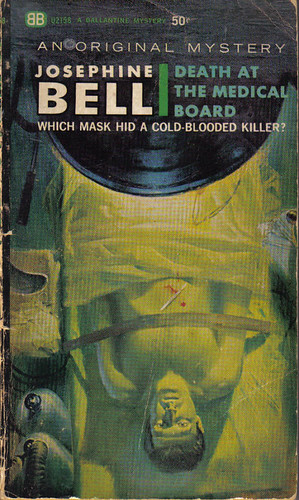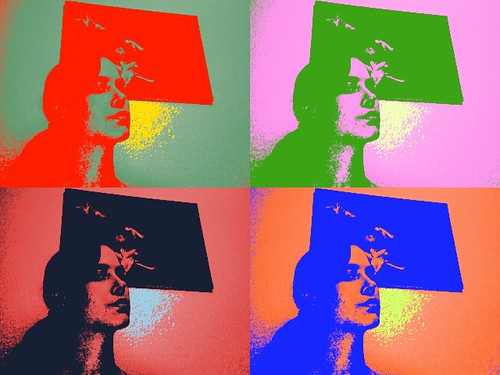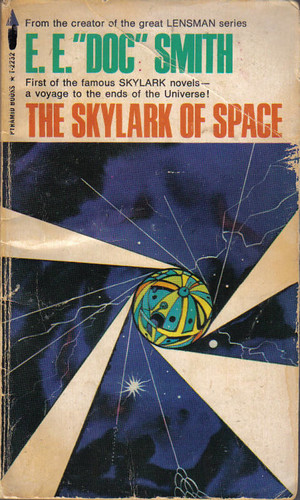 Death at the Medical Board by Josephine Bell (1944 -- although this cover is the 1964 edition reissued by Ballantine), really couldn't be more wartime British. At every twist of the plot something turns around petrol rations, board reviews for military service, false doctor's certificates to avoid conscription, secret German spy rings, and the fact that it is apparently very hard to find lipstick in your favorite shade when the country is at war. Add to that the complicated inheritance rules surrounding British landowners with twin sons, and you have the makings of a rather complicated mystery on your hands.
Death at the Medical Board by Josephine Bell (1944 -- although this cover is the 1964 edition reissued by Ballantine), really couldn't be more wartime British. At every twist of the plot something turns around petrol rations, board reviews for military service, false doctor's certificates to avoid conscription, secret German spy rings, and the fact that it is apparently very hard to find lipstick in your favorite shade when the country is at war. Add to that the complicated inheritance rules surrounding British landowners with twin sons, and you have the makings of a rather complicated mystery on your hands.Josephine Bell was a physician herself, and the medical parts of this mystery make it read like a 1940s CSI. In fact, our amateur-detective hero, David Wintringham (who is featured in many of Bell's books), is actually a doctor who just enjoys solving mysteries. Somehow his top-secret appointment for the war effort qualifies him to start investigating the mysterious death of Ursula Frinton, a young member of the local gentry who may or may not have had heart trouble and who drops dead at the Medical Board after being examined for war service. Her death is actually rather awesome (slight spoiler ahead, but it comes up rather early in the book so it doesn't give away too much): She gets it from a hypodermic needle filled with nicotine and embedded in her lipstick. When she twists the lipstick tube the needle is armed, and when she presses it to her lips, she is injected with the poisonous nicotine.
And then a bunch of other people start dying, and everyone seems to have a motive. Will Dr. Wintringham be able to solve the mystery before the murderer catches up to him? I'll just leave you in suspense on that one.
[And did you know that back-of-the-book advertisements work? I saw an ad for the recently (in 1964) released book Dewey Death by Charity Blackstock and I ordered up a copy from the wonderful Internet. Murder in the stacks! I can hardly wait...]







